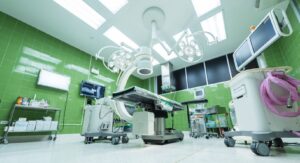 Medical equipment and devices allow medical professionals, such as doctors, to assess the medical needs of their patients. Therefore, knowing the different medical devices available, their functions, and how they work together consistently to support and treat patients appropriately is vital.
Medical equipment and devices allow medical professionals, such as doctors, to assess the medical needs of their patients. Therefore, knowing the different medical devices available, their functions, and how they work together consistently to support and treat patients appropriately is vital.
Various types of medical equipment and consumables are increasing day by day. There are different medical devices and consumables categories, such as diagnostic, surgical, durable medical Equipment (DME), acute care, and storage and transportation.
Storage and transportation of medical equipment
Equipment used to store and transport medical supplies. This equipment is used to provide patients and medical professionals with various medical supplies for various reasons. Storage and transportation equipment types include luggage and storage trolleys and utility carts. These types of equipment need high-quality nuts and bolts from www.scrooz.com.au because they are often used.
Durable Medical Equipment
DME is a durable medical device that supports patients safely and comfortably. This device is mainly used for therapeutic purposes and can be used both in hospitals and at home. They are designed for long-term use. Most durable medical equipment is designed with load-bearing strength and non-slip features. Standard Durable Medical Equipment includes wheelchairs, assistive mobility equipment such as walkers, canes, crutches, hospital beds, ventilators, lifts, and traction equipment.
Electronic Medical Equipment
Electronic equipment monitors and records the heartbeat and brain waves. These electronic medical supplies include medical imaging software, heart rate monitors, blood pressure monitors, medication pumps, and defibrillators.
Procedural Medical Equipment
Procedural Medical equipment is used in any medical procedure and contains various items. It assists and makes the procedures go more smoothly and more accessible such as surgical clamps, scalpels, forceps, gloves, operating scissors, and headlights.
Diagnostic Medical Equipment
Equipment or supplies diagnose, test, or find patients’ conditions. The equipment detects abnormalities in the organs or other parts of the body that may be causing the symptoms. Medical professionals cannot correctly diagnose patients and administer appropriate treatments without diagnostic equipment. Diagnostic instruments used in hospitals and clinics include imaging equipment such as X-rays, MRI scans, and CT scans.
